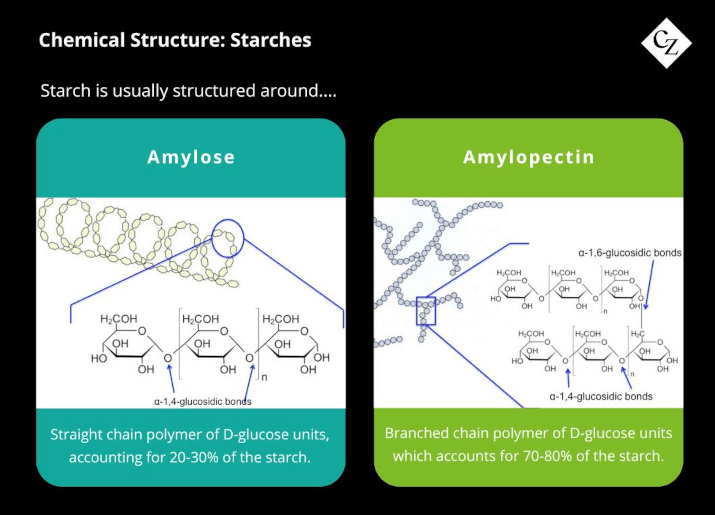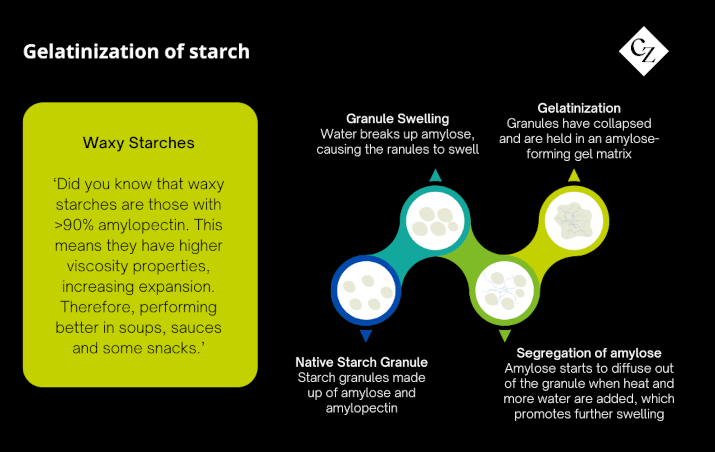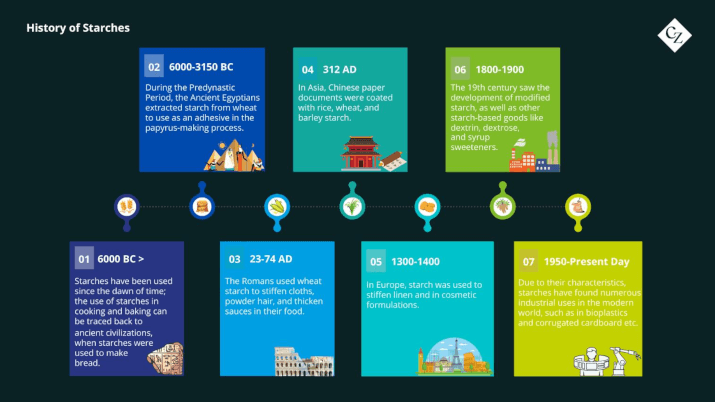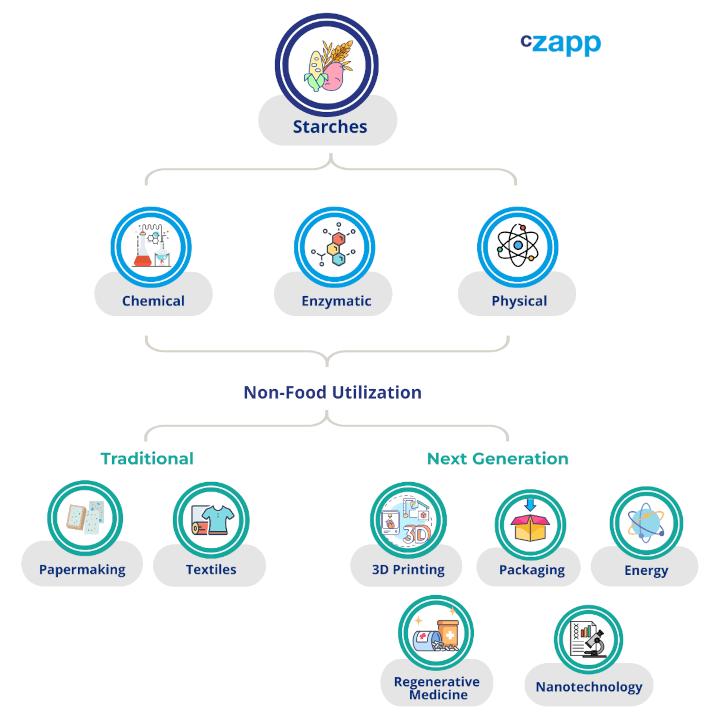Starch Structure
Starch is a naturally occurring carbohydrate composed of long chains of glucose molecules. These chains can be linear (Amylose) or branched (Amylopectin). Starch is typically composed of 20-30% amylose and 70-80% amylopectin.

Why is this important?
Starch’s functionality changes according to its molecular structure. The amylose:amylopectin ratio influences the gelling strength vs viscosity ratio that the end product will possess.

But how did we get here? When did this all start?
The History of Native Starches
Native starches are a naturally occurring carbohydrate found in wheat, corn (maize), potatoes, tapioca, rice, peas, barley, pulses, arrowroot, and many other plants.
Native starches have been used in various regions of the world since ancient times due to their abundance in nature.
The early use of starch dates back to Northern Africa during the Predynastic Period when Egyptians extracted starch from wheat to use as an adhesive in the papyrus making. There is also evidence that the Romans used wheat starch to make papyrus, stiffen cloths and powder their hair as well as a food ingredient to thicken sauces. During the same period, in Asia, Chinese paper documents were coated with rice, wheat and barley starch.
Fast forward to the 14th Century, in Europe, starch was used to stiffen linen and in cosmetic formulations. Native starches were primarily used as a thickener and texture enhancer in early food applications until the nineteenth century, when, due to their limitations, such as breaking down when reheated or in acidic environments, food innovation research and development replaced them with modified starches.
Although displaced by their modified versions offering higher functionalities, native starches are still used, and they are gaining back their popularity due to health trends within the food industry and consumers demand for natural and clean label ingredients.

The History of Modified Starches
The first modified starches, according to Starch Europe, date back to the 19th century.
Numerous modified starches have since been developed to overcome the technological constraints imposed by cooking, freezing/thawing, canning, or sterilization, making them suitable for modern diets. In other words, these modified starches transform foods to make them suitable for today’s food and beverage industries, which include microwavable foods, instant preparations, and ultrahigh temperatures.
Why do we use the term “modified starches”?
Starch that has had its natural properties altered through physical, chemical, or enzymatic means is known as modified food starch. Although the term “modified” in this context does not necessarily imply genetic modification, some modified starches are can be made from ingredients that have undergone genetic modification.
In Europe, non-GMO agricultural raw materials are used to produce starch, the majority of which are plant-based ingredients/additives derived from cereals and tubers used in food.
How are Modified Starches used in Food?
Modified starches are a type of food additive that act as a binder, thickener, stabilizer, emulsifier, or gelling agent. Typically, ingredients like corn, wheat, potato, and tapioca are used to create modified food starches.
Industrial Use: Demand Shift?
Throughout the last few decades, the starch market has evolved and expanded to include industries other than food and beverage. In recent years, there has been an upsurge in demand for starches used in the paper and packaging industries.
According to Grains Processing, a major starch producer, industrial starch is one of the most commonly used raw materials in the paper and paperboard industries. The rising popularity of ready-made foods, as well as the booming e-commerce, are driving up demand for industrial starch. COVID slightly exacerbated this growth by increasing online shopping and restaurant ordering during the lockdown periods.
The most common paper grade is corrugated packaging paper. According to Rochester Midland Corporation, corrugated board is the world’s second-largest use of non-food starches, trailing only paper production (RMC).
Other uses:
Starches are a critical element for the sustainable transition our institutions are striving to achieve. As a renewable and biodegradable raw material, attention on them as well as R&D is growing exponentially. As such, here are a few examples of the use of starches outside the food and beverage industry:






